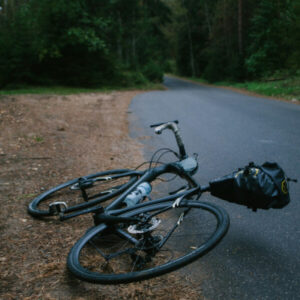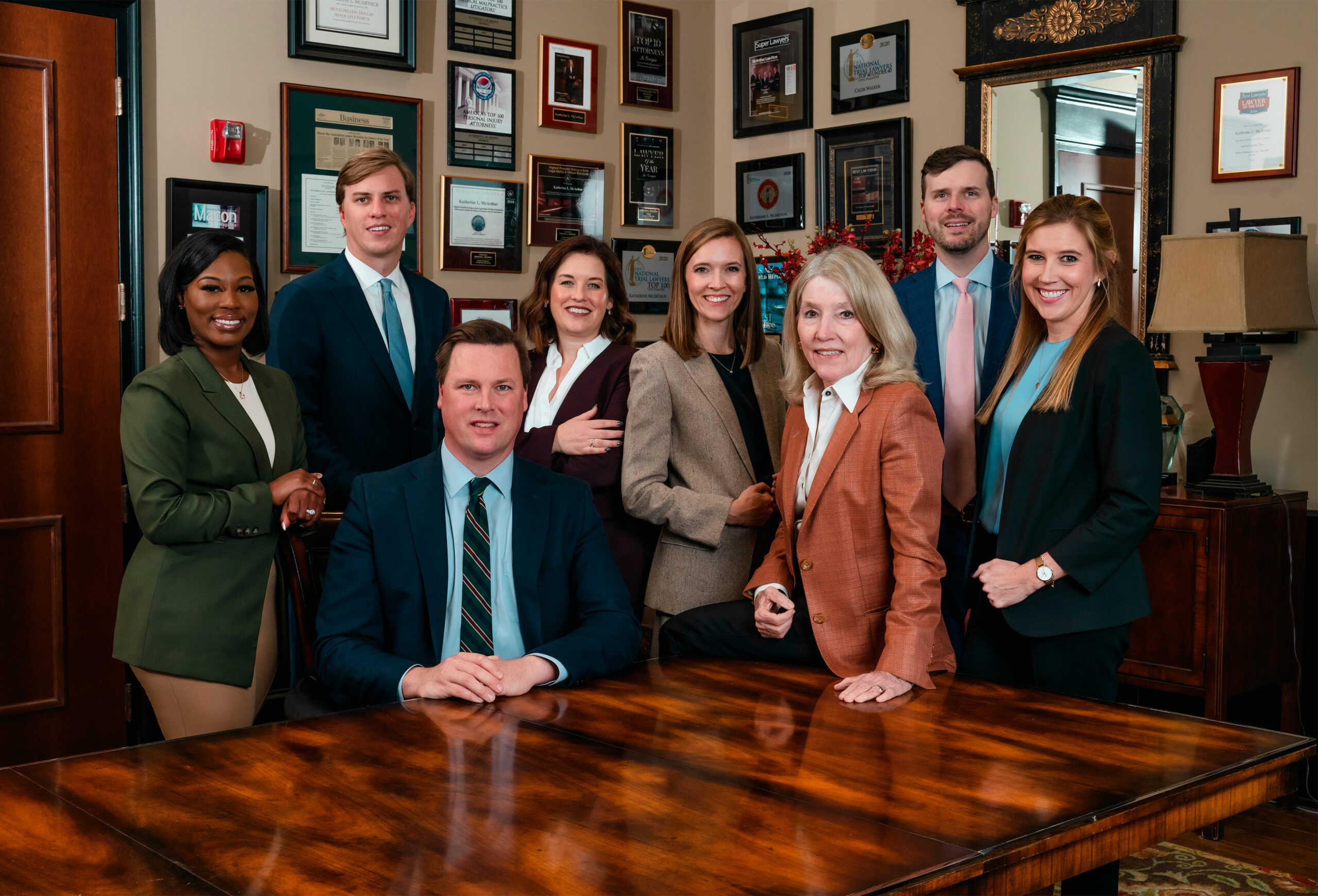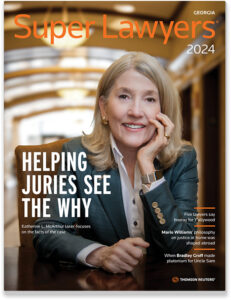Cycling should be a safe and enjoyable way to get around—but when careless drivers, poor road conditions, or defective equipment come into play, a simple ride can turn into a life-changing accident. After a bike crash, victims are often left with serious injuries, mounting medical bills, and more confusion than clarity – if this happens, contact a bicycle accident lawyer as soon as possible.
Georgia Bike Accident Lawyers
At McArthur Law Firm, our attorneys fight for victims of bike accidents. We’ve stood beside clients in Atlanta, Macon, Warner Robins, and beyond—helping them pursue justice and the compensation they need to recover. Bicycle accident cases can involve complex questions about liability, insurance coverage, and traffic laws, which is why it’s critical to act quickly, gather evidence, and work with a legal team that understands the unique challenges cyclists face.
McArthur Law Firm serves Fulton County, Bibb County and Fulton County, as well as Clayton County, Cherokee County, Forsyth County, and other counties in Georgia. For more information about the McArthur Law Firm or to set up a free consultation to learn what we may be able to do to help you with your personal injury case, give us a call at one of our offices in Georgia or fill out our online contact form.
- Atlanta Office: 404-565-1621
- Macon Office: 478-238-6600
- Warner Robins: (478) 551-9901
Overview of Bike Accident Cases
- Common Type of Bike Accidents
- Types of Injuries Caused by Bike Accidents
- Georgia Bike Accident Hotspots
- Who Can Be Held Liable For A Georgia Bike Accident
- Frequently Asked Questions
- Additional Resources
Common Types of Bike Accidents

One of the most frequent and dangerous bike crash types involves cars making left or right turns near cyclists. In a typical left-turn scenario, a driver turns left across traffic and underestimates the speed of an oncoming cyclist or simply doesn’t see them. These collisions usually happen at intersections when the driver is focused on avoiding oncoming vehicles but fails to notice a bike.
A similar type of crash is the “right-hook.” This happens when a driver passes a cyclist on the left and then immediately turns right, cutting across the rider’s path. These types of accidents are especially common at intersections and driveways, where vehicle and bicycle paths often overlap.
Dooring Accidents
Dooring occurs when a driver or passenger in a parked car opens their door into the path of a cyclist without checking for traffic. These accidents are particularly common in urban areas like Atlanta, Savannah, or Athens, where street parking runs alongside designated bike lanes. Cyclists have little time or space to react, often resulting in crashes or swerving into traffic to avoid a door.
Rear-End Collisions
Rear-end accidents happen when a vehicle hits a cyclist from behind. These crashes are among the most dangerous for cyclists due to the high likelihood of serious injuries. They often occur when drivers follow too closely, are speeding, or become distracted—such as when texting or looking away from the road. Rear-end collisions can happen on both city streets and rural roads, especially in areas with poor lighting or limited bike infrastructure.
Unsafe Passing and Sideswipe Accidents
Drivers attempting to pass cyclists without enough room often cause sideswipe accidents. Georgia roads—especially narrow or shoulderless ones—can be hazardous for this reason. When a driver tries to squeeze past without slowing down or waiting for a safe opportunity, the result can be a sideswipe or a cyclist being forced off the road entirely. These accidents are especially common during rush hour or in congested areas where patience is low and traffic is heavy.
Failure to Yield at Intersections
Intersections are a high-risk zone for cyclists. Accidents frequently happen when drivers fail to yield while turning, running stop signs, or crossing bike lanes without checking for cyclists. Bicyclists traveling straight through an intersection are often overlooked, especially when they are positioned to the side or behind other vehicles. This type of crash is common at four-way stops, crosswalks, and driveways.
Hit-and-Run Bicycle Accidents
Unfortunately, some drivers leave the scene after striking a cyclist. Hit-and-run accidents can be especially dangerous because the injured rider may not receive immediate help. These incidents are more likely to occur at night or in areas with less visibility, such as rural roads or side streets. In many cases, the driver may flee out of panic or because they’re not aware they’ve hit someone.
Crashes Caused by Poor Road Conditions
Bicycles are more vulnerable than cars when it comes to road hazards. Potholes, debris, uneven pavement, and loose gravel can all cause a rider to lose control. In some cases, construction zones or poorly maintained shoulders become traps for cyclists. Crashes caused by road conditions are more likely in areas where infrastructure has not been updated or maintained, including both urban and rural parts of Georgia.
Impaired Driver Crashes
Accidents involving impaired drivers—whether under the influence of alcohol or drugs—often lead to severe or even fatal injuries for cyclists. Impaired drivers may weave between lanes, ignore traffic signals, or fail to react in time to avoid a cyclist. These crashes can happen at any time of day but are most frequent at night or on weekends when impaired driving incidents tend to spike.
Bike-on-Bike and Pedestrian Crashes
Not all bicycle accidents involve cars. Cyclists can also collide with pedestrians or with each other, especially on shared-use paths and sidewalks. Crowded trails like the Atlanta BeltLine or campus walkways often become hotspots for these incidents. Factors like visibility, speed, and crowd density can all increase the chance of a crash.
Commercial and Rideshare Vehicle Collisions
Cyclists are also at risk around larger vehicles like delivery trucks, rideshare cars, and utility vans. These vehicles make frequent stops and turns and often navigate tight urban spaces where bikes are present. Crashes with these types of vehicles are common in business districts and near loading zones, especially during peak traffic hours.
Types of Injuries Caused by Bike Accidents
Traumatic Brain Injuries
Even with a helmet, a cyclist can suffer a concussion or more serious traumatic brain injury (TBI). The force of impact, especially from a car or truck, can shake the brain inside the skull. These injuries may not be visible right away but can lead to memory loss, confusion, or long-term disability.
Spinal Cord Damage And Paralysis
A hard fall or crash can damage the spinal cord. In serious cases, this leads to partial or full paralysis. Many bike accidents involve being thrown from the bike, landing hard on the back or neck, or being pinned under a vehicle. These are life-altering injuries that often require lifelong care.
Facial Fractures And Dental Injuries
Cyclists who crash face-first onto pavement or another object may suffer broken noses, cheekbones, jawbones, or teeth. Helmets don’t protect the lower face, and these injuries often involve reconstructive surgery or implants. Dental injuries can also cause long-term pain and complications.
Road Rash And Deep Abrasions
When a cyclist slides across asphalt, the friction can tear skin away in layers. This is known as road rash. Severe cases may require skin grafts and leave permanent scarring. Infection is also a serious risk, especially when gravel or dirt becomes embedded in the wounds.
Internal Bleeding And Organ Injury
Blunt force trauma from a bike crash can damage organs like the spleen, liver, or lungs. These injuries may not show up immediately but can become life-threatening. Emergency medical care is often needed to detect and stop internal bleeding.
Broken Bones In Wrists, Arms, And Legs
Cyclists often put their hands out to break a fall, leading to broken wrists, forearms, or shoulders. Leg fractures happen when a bike gets hit directly or pinned. These breaks can require surgery, metal plates, or extended time off work for healing.
Emotional Trauma And Anxiety Disorders
Many victims experience PTSD, fear of biking again, nightmares, and long-term anxiety after an accident. These psychological effects can be just as disruptive as physical injuries. Treatment may include therapy or medication, and emotional distress is a recognized category of damages in Georgia.
Why Bike Injuries Are Often Worse Than Car Crash Injuries
Unlike car drivers, cyclists don’t have seat belts, airbags, or a metal frame to protect them. Even low-speed collisions can cause serious injuries. Most bike crashes involve direct contact with pavement, vehicles, or other hard surfaces. Because of that, the physical and emotional toll is usually more severe.
Georgia Bike Accident Hotspots
Bike accidents in Georgia can happen anywhere, but certain areas in cities like Atlanta, Macon, and Warner Robins are especially dangerous for cyclists. These locations usually have a mix of fast-moving cars, poor bike infrastructure, distracted drivers, and high traffic volume.
In Atlanta, Midtown and Downtown are frequent hotspots. Cyclists often share narrow roads with impatient drivers, and bike lanes are sometimes blocked by parked vehicles or delivery trucks. Peachtree Street, Ponce de Leon Avenue, and intersections along the Atlanta BeltLine are especially risky, particularly during rush hour. The city has added bike lanes in some places, but not all of them are protected or respected by drivers.
Macon sees many bike accidents on busy roads like Riverside Drive, Mercer University Drive, and Eisenhower Parkway. These roads are major connectors with multiple lanes, limited bike facilities, and high-speed traffic. Some neighborhoods near schools and shopping centers also present risks, especially when cars make quick turns or fail to stop at marked crossings. Downtown Macon has more pedestrian and bike activity, but also more chances for driver error in congested spots.
In Warner Robins, major routes like Watson Boulevard and Russell Parkway are common areas for bike collisions. These roads carry a lot of traffic, and many cyclists must ride near busy commercial areas or cross multiple lanes. Residential zones, especially near schools or parks, also see accidents when drivers don’t expect or yield to children or casual riders on bikes.
Across all three cities, intersections are one of the most dangerous places for cyclists. According to Georgia Code § 40-6-291, cyclists have the same rights and responsibilities as drivers, but many motorists don’t understand or follow this rule. Add in distracted driving or poor road design, and it’s easy to see why these accident zones keep repeating.
Who Can Be Held Liable For A Georgia Bike Accident
Driver of a Motor Vehicle
Most often, the driver of a car, truck, or other motor vehicle is at fault. Common reasons include failing to yield, turning into a cyclist’s path, texting while driving, speeding, or ignoring traffic signals. Under Georgia Code § 40-6-56, drivers must leave at least three feet of space when passing a bicycle. Violating this rule may lead to liability if the cyclist is injured. Georgia Code § 40-6-241 also makes it illegal to drive while distracted, including texting or using a phone with hands.
City or County Government
In some cases, the city or county government can be held liable. This may apply when poor road design, unmarked hazards, or broken infrastructure contributes to the crash. For example, a cyclist thrown from their bike due to a pothole or missing storm drain cover may have a claim against the city, but only if the government had notice and failed to fix it within a reasonable time. Claims against government entities must follow strict procedures under the Georgia Tort Claims Act, and deadlines are shorter than in private cases.
Commercial Vehicle Employers
If the crash involved a commercial vehicle—like a delivery truck or rideshare car—the company that employed the driver could be legally responsible. This is based on a legal concept called “respondeat superior,” where employers are responsible for accidents caused by their workers if the crash happened while the driver was doing their job. If the driver was off-duty or using the vehicle for personal reasons, the company may not be liable.
Bicycle or Part Manufacturer
In rare situations, a manufacturer could be responsible. If a bicycle or bike part failed due to a defect—like a faulty brake or tire blowout—a product liability claim might be available. These cases are more complex and usually require engineering analysis and expert testimony.
Shared Fault and Comparative Negligence
It’s also possible for multiple parties to share fault. Under Georgia’s modified comparative fault rule, found in O.C.G.A. § 51-12-33, a cyclist can still recover damages if they were less than 50% at fault. However, their total compensation will be reduced by the percentage of their own fault. For example, if a cyclist was 20% at fault for not using lights at night, their damages would be reduced by 20%.
Each case depends on the facts. Identifying who’s liable requires a close look at police reports, witness statements, traffic laws, and sometimes accident reconstruction.
Frequently Asked Questions About Georgia Bike Accidents
Can compensation be recovered if the cyclist wasn’t wearing a helmet?
Yes. Helmets are only required for riders under 16 in Georgia. Adults without helmets may still recover damages, though insurers might argue for reduced compensation.
What if the driver left the scene?
It’s a crime to flee an accident. If the driver isn’t found, a cyclist may file a claim through their own or a household member’s uninsured motorist (UM) policy.
How long is there to file a claim?
Generally, two years from the accident date. Claims involving government entities may require notice within six months.
Can the city be sued if a road hazard caused the bike crash?
Possibly. If the city knew of the hazard and failed to act, it may be liable. Special procedures and short deadlines apply.
Is it necessary to hire a lawyer for a bike accident case?
Not legally, but it’s recommended. A lawyer improves the chances of fair compensation, especially in disputed or complex cases.
What if the cyclist was partially at fault for the accident?
Recovery is allowed if the cyclist was less than 50% at fault, but compensation is reduced by their share of fault.
Will the driver’s insurance cover hospital bills?
Yes, if the driver is at fault. But insurers may not pay fairly without legal pressure.
Can lost wages be recovered if work is missed?
Yes. Lost income and future earnings can be claimed with proper documentation.
Is there a valid claim if no bones were broken?
Yes. Soft tissue injuries, concussions, and emotional harm can still support a claim.
Additional Resources
Georgia Governor’s Office of Highway Safety – Laws Pertaining to Bicycles and Bicycling – This source outlines Georgia’s traffic laws as they apply to bicycles. It includes information on where bicycles can be ridden, required safety equipment, and rules for specific situations such as riding with passengers or at night. It also describes the responsibilities of parents and guardians and outlines penalties for violations.
NHTSA – Bicycle Safety – This page from the National Highway Traffic Safety Administration provides guidance on bicycle safety for both cyclists and drivers. It includes tips on helmet fitting, visibility, riding behavior, and how to avoid crashes. The content also emphasizes the need for cyclists to follow the same road rules as motorists and for drivers to share the road safely.
NHTSA – Traffic Safety Facts: Bicyclists and Other Cyclists (2020 Data) – This fact sheet presents data on bicycle-related traffic crashes in 2020. It includes statistics on fatalities and injuries by age, sex, time of day, and location. The report also analyzes crash circumstances such as alcohol involvement and vehicle type. It offers insights into when and where crashes most often occur and highlights trends across states and cities.
Department of Transportation – Pedestrian & Bicyclist Safety – This official U.S. Department of Transportation page provides national information on pedestrian and bicyclist safety. It includes crash statistics, safety initiatives, and planning tools focused on reducing fatalities and injuries.
City of Atlanta – Bicycles – This City of Atlanta webpage offers information about local bicycle infrastructure, planning efforts, and public programs. Visitors can learn about the city’s bike plans, request bike rack installations, and report maintenance issues. The site also includes details on local bike laws, transit policies, and efforts to expand safe biking options.
National Library of Medicine – Bicycle Infrastructure and Crash Incidence Study – This research article presents a study on the relationship between bicycle infrastructure and crash rates in Atlanta. Using data from Strava and local bike counters, the study compares crash risks across various types of bike lanes and trails. It offers insights into how infrastructure design can influence safety outcomes for bicyclists.
Hire a Personal Injury Attorney for Cycling Accidents in Georgia
McArthur Law Firm serves the cities of Atlanta in Fulton County, Macon in Bibb County, Kathleen in Houston County, Peachtree Corners and Lawrenceville in Gwinnett County, Marietta and Smyrna in Cobb County, Stonecrest, Brookhaven and Dunwoody in Dekalb County, Albany in Dougherty County, Columbus in Muscogee County and throughout surrounding areas of the state of Georgia.
Contact one of our offices at the following numbers or fill out an online contact form to start building your case.
- Atlanta Office: 404-565-1621
- Macon Office: 478-238-6600
- Warner Robins: (478) 551-9901







